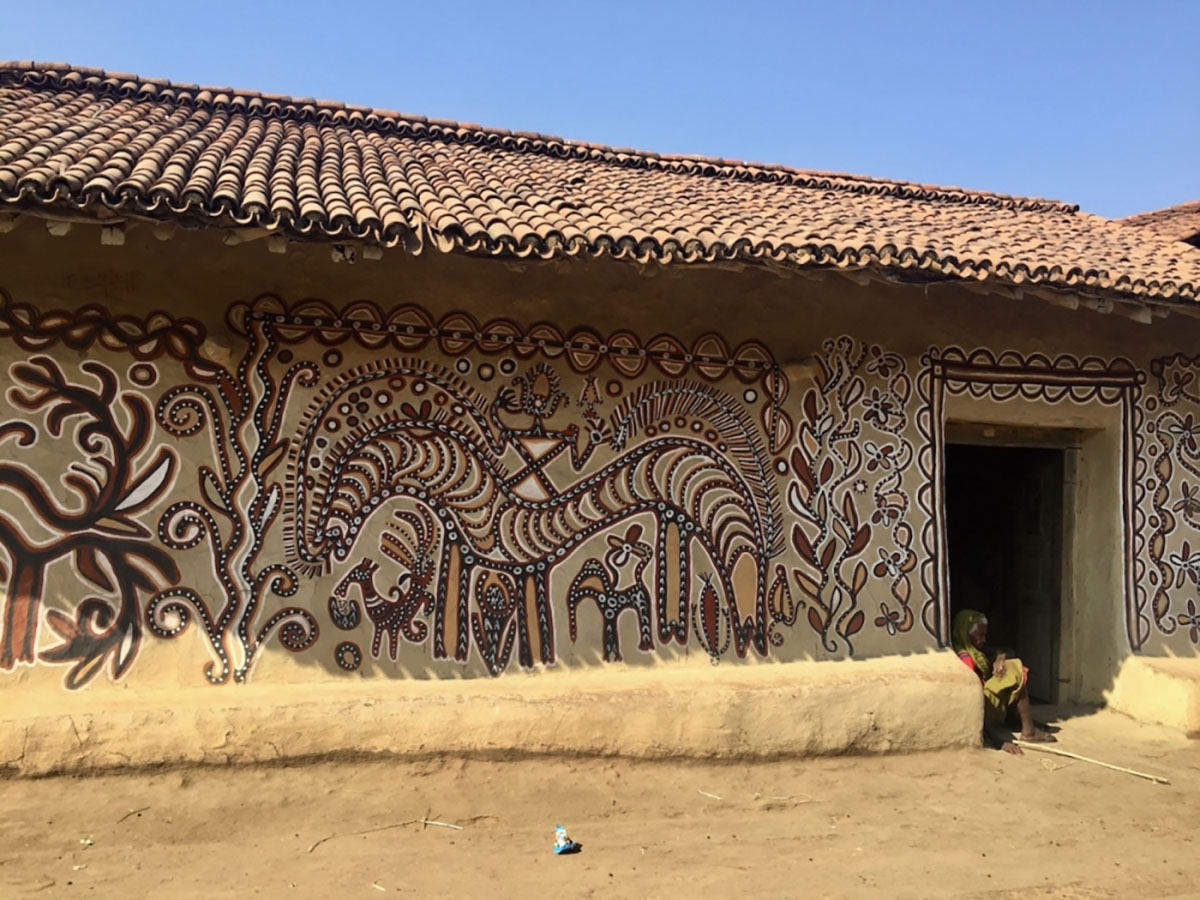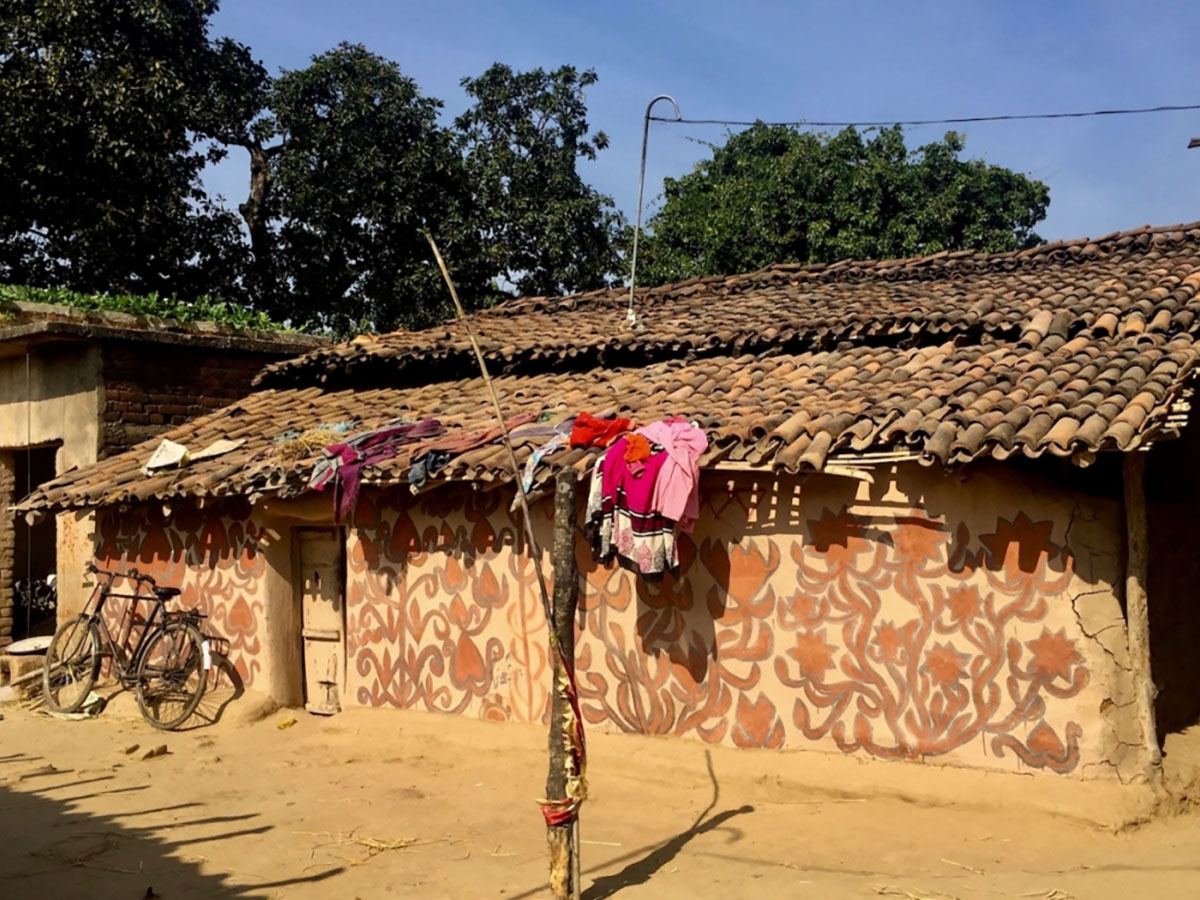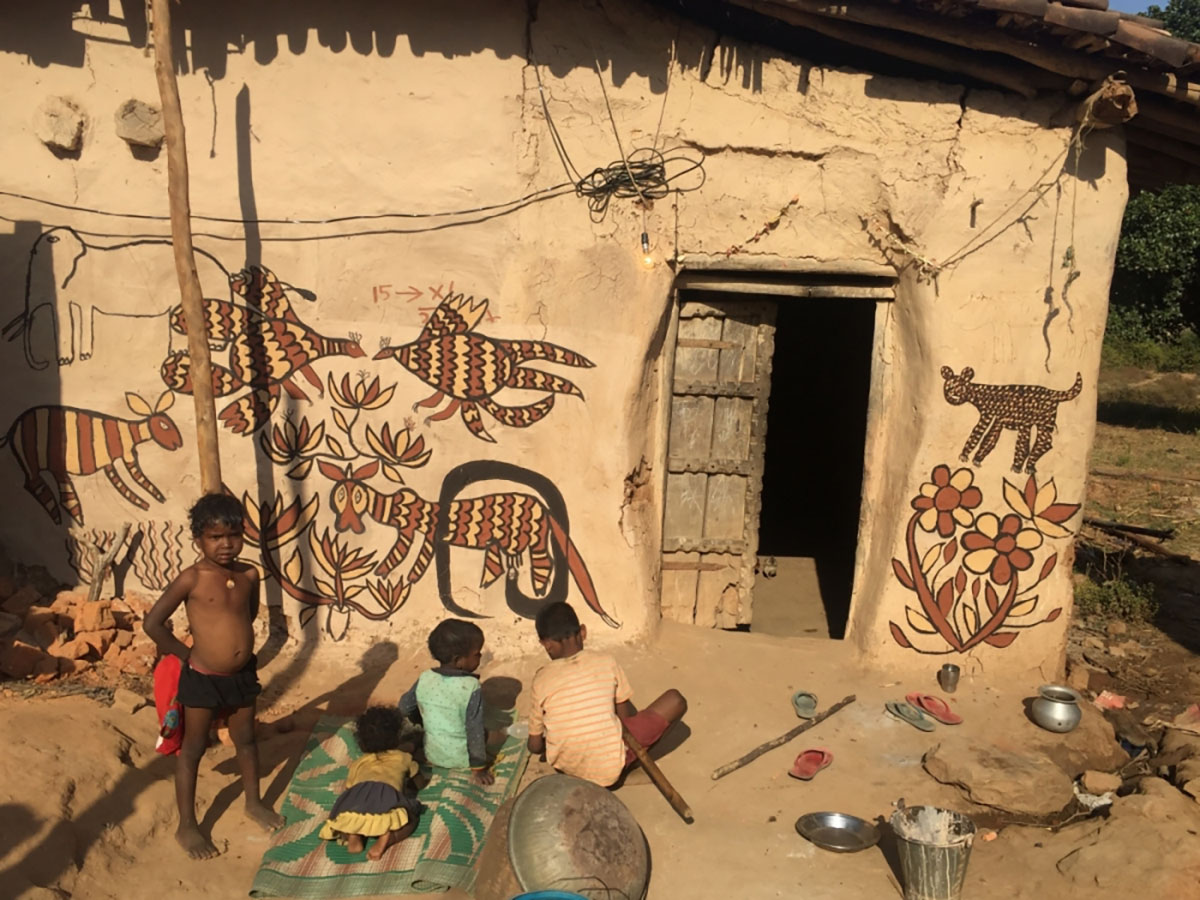ARTICLE
Sohrai Painting
Along with Khovar, Sohrai is one of two historical mural painting traditions of the Hazaribagh region of the eastern Indian state of Jharkhand. Sohrai murals are created on the external walls of homes to mark the festival of Sohrai and the harvest season, which lasts from late October to December. The word has its roots in the ancient word soro, which refers to the act of driving animals with a stick.
Sohrai painting is practised by the women of several indigenous communities, including the Santhal, Munda, Oraon, Agaria, Kurmi, Ghatwal, Ganju and Prajapati communities. Sohrai is one of the chief festivals of the region, celebrated over five days after Diwali, and it marks the beginning of the winter harvest season. The celebration of cattle, central to the agricultural practices of the communities, is the main feature of this festival. On the second day of Sohrai, cattle are taken to the forest to graze and are bathed and brought back into the village, where women have painted Sohrai murals and floor art locally known as aripan.
In the 1920s, the murals decorating the homes of these communities had been observed and recorded by administrators in the colonial era and by Indian anthropologist Sarat Chandra Roy. The discovery of painted shelters at Isko and close to the Satpahar Range near Hazaribagh in the 1990s provided historians with a link between rock art dating back to the meso-chalcolithic period (approximately 7000–4000 BCE) and existing artistic traditions in the region. Studies have found similarities between the motifs used in the painted shelters and those of the Sohrai and Khovar traditions. Among members of the Oraon community, who reside close to the sites, the rock shelters still serve as sites for certain community rituals.
Sohrai painting encompasses motifs such as geometric figures, animals, flowers and plants, as well as representations of Shiva depicted as Pashupati, lord of the animals, in zoomorphic and anthropomorphic forms. The paintings are done by women, with the techniques and designs passed down from mother to daughter. The limited mobility of women in these communities has an influence on the motifs and designs and each village has developed a unique design style. When women move homes after marriage, they carry their traditional design knowledge with them into another environment, which introduces new characteristics into the existing styles. There is a more practical aspect to Sohrai painting as well: mud houses, on which these paintings are made, must be repaired and re-plastered following the monsoon, and the murals help provide another layer of protection to the structure, while also serving a decorative purpose.
Once the mud houses have been repaired, women begin collecting materials for painting. All the pigments are obtained from local soils and, in some cases, from gruel made by mixing milk with ground rice from the previous year’s harvest. The palette is limited to black, red, yellow and white, although there may be variations depending on the soil available to different communities. Black is derived from manganese-rich clay, sourced from fields bordering forests. Red is derived from red ochre, locally known as gerua, or from haematite. Yellow comes from yellow earth ochre, which is locally known as nagri or pila maati, and white is derived from kaolin, locally known as charak maati. A cream-coloured soil, locally known as dhudhi maati, is also used in Sohrai painting. Kaolin is sourced from local tunnels, also known as chunna khaan. In the Sohrai art of the Ganju community, a purple-red pigment is also used, which is derived from haematite of the same colour. Water is used to dilute the soils, but the artists do not use any binders. The tools to apply the pigments include swabs of cloth, broken combs, nails, and twigs of the Sal tree fashioned into teeth cleaners, which are known as datwan or kuchi.
The painting may be done by one of two methods. In the first, women coat the surface with a layer of white mud and, while the layer is still wet, paint on it using datwan or cloth swabs. Here, pigments are used in an order and carry symbolic value. Red is painted first, to denote the ancestors and fertility. Black represents the mark of Shiva and white, made from rice gruel, denotes food. In the second method, also known as the comb-cutting technique, a base layer of black clay is covered with white clay and, while the upper layer is still wet, patterns are drawn on it using a broken comb, fingers or nails. These details are then filled in with other pigments.
Sohrai paintings of different communities have their own distinct characteristics. Those by the Kurmi community feature kamalban – a popular motif depicting a forest of lotuses – where finer details are made with the help of nails. The paintings of the Ghatwal and Agaria communities resemble stencil art: after the kaolin-clay layer has been applied, the wall is divided into rectangular segments and, on this layer, artists paint with darker clay in a way that leaves the base white layer exposed. Within the Munda community, which resides close to the rock-art site of Isko, artists paint community deities with their fingers and add vermilion and white spots to their art. Pashupati is often depicted as riding an animal or taking the form of a leaf.
Sohrai painting, and mural painting traditions in the region in general, have been challenged by an array of factors over the last few decades. Cement and concrete houses are gradually replacing traditional mud houses. Jharkhand is also the site of several large-scale development and infrastructure projects, which threaten several communities with displacement. Efforts are being made by local organisations and individuals, such as Imam, to provide incentives to the artists to continue with the tradition and to train them to adapt the technique to paper and canvas.
In 2019, Khovar and Sohrai painting were accorded a Geographical Indications (GI) tag by the Government of India.
Bibliography
Our website is currently undergoing maintenance and re-design, due to which we have had to take down some of our bibliographies. While these will be re-published shortly, you can request references for specific articles by writing to hellomapacademy@map-india.org.









